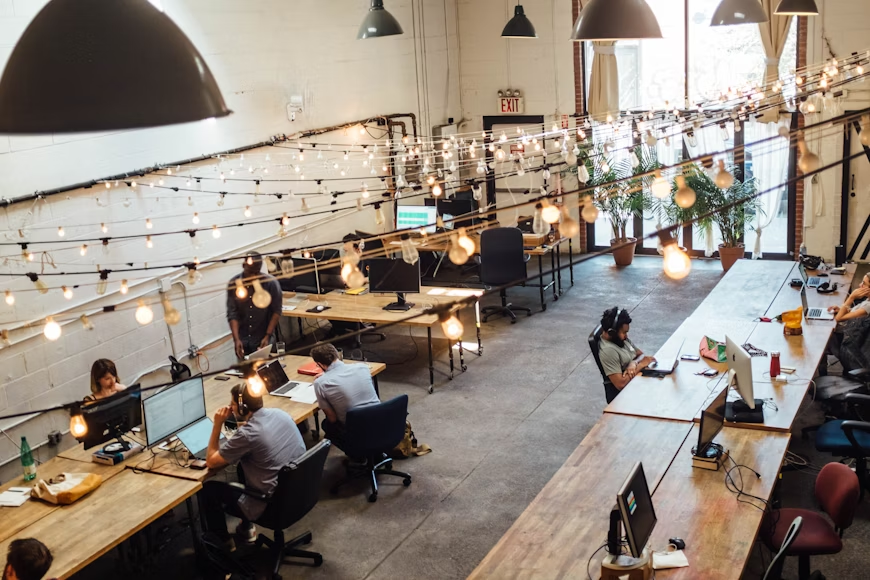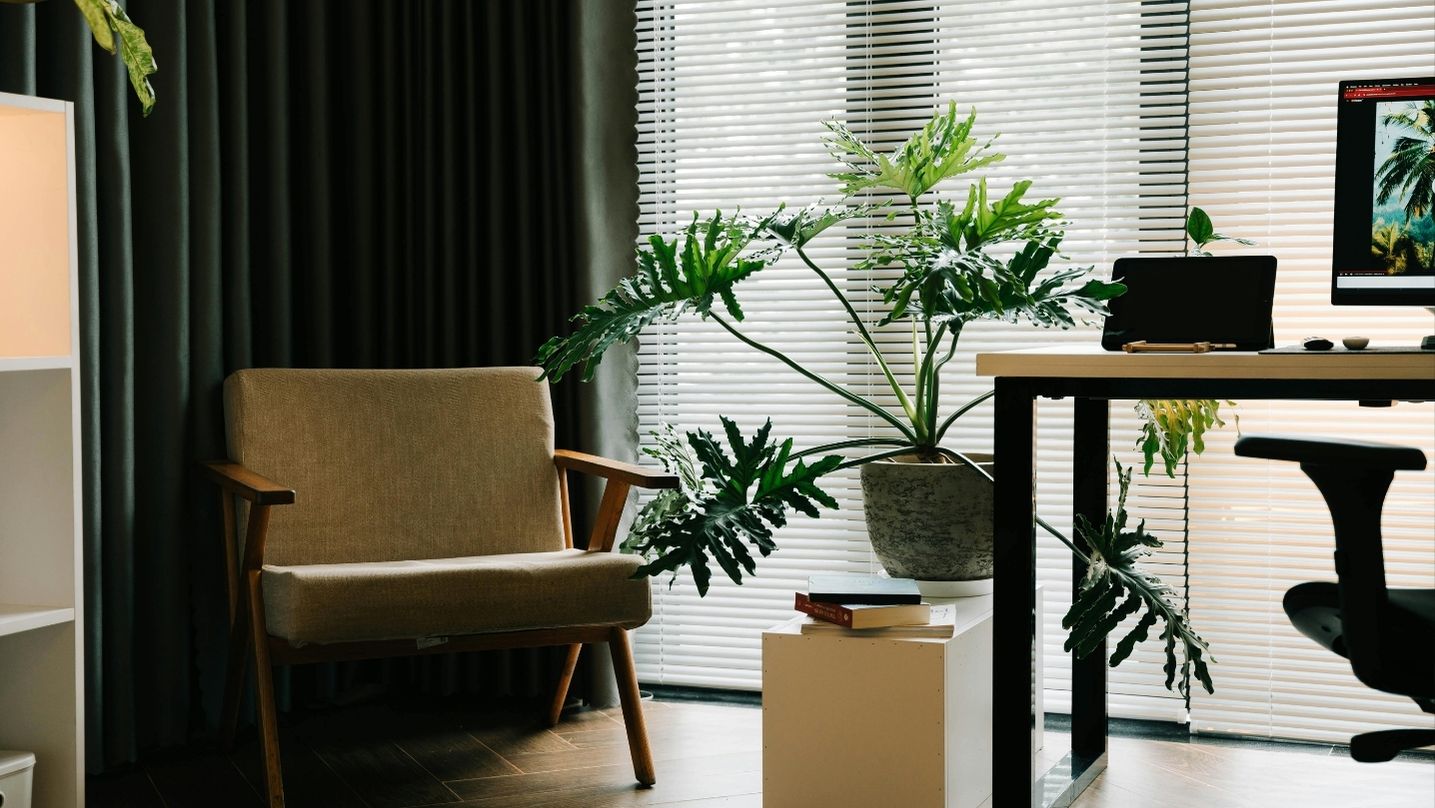Every morning, the story is the same, and Monday mornings are the worst. Rebekah drags herself into an office filled with dull, gray cubicles. The space is cold and impersonal, and the silence feels more stifling than serene.
She’s not dreading her work, but the environment in which it happens. However, her sterile environment will naturally impact her productivity and well-being. Innovative and homey office design is a must in light of how employee engagement declined by 21% in 2024. It blends professional functionality with the warmth and comfort of the home.
There’s been a growing realization that traditional offices weren’t designed with human comfort and creativity in mind. The homey office has already entered the scene, changing the game.
This article will share four powerful ways the shift is taking place, ultimately reshaping the future of work.
Comfort-First Thinking Redefines Productivity
Previously, workplace productivity was largely tied to structure. It was commonplace for offices to feature upright chairs, rigid desks, and uniform lighting.
As the work culture evolved, so did one’s understanding of what people-centric design had to offer. Today, the mindset puts comfort first, not as a luxury but as a fundamental condition for focus and creativity.
After all, productivity is closely tied to work experience. Deloitte reveals that employees who are satisfied with their work experience tend to be two times as productive as those who are not. Prioritizing physical, emotional, and sensory ease, comfort-first design makes people feel safe and supported at work.
So, what are its main elements? Here’s a quick breakdown:
- Ergonomic and flexible furniture, like adjustable desks and chairs
- Warm and calming color palettes that include soft neutrals and earthy tones
- Layered and adjustable lighting, such as lamps, sconces, and even natural light
- Acoustic comfort in the form of sound-absorbing materials
Natural Materials Foster Serenity and Connection
Natural materials and rich textures have become the defining elements of homey office design. This is a striking contrast from the pre-homey era, which was marked by synthetic finishes, sterile textures, and mass-produced surfaces.
One study supports the use of biophilic workplace design. It found this to be especially beneficial in open-plan offices where distractions are usually high. One can almost picture natural materials being revolutionary in workplaces belonging to bustling cities like New York City.
This city even emerged as the world’s most globally significant city. However, its urban landscape can be depressing, with concrete, glass, and steel dominating the surroundings. Stepping into an office space in New York City that embraces natural materials and textures can feel almost therapeutic.
The Farm Soho shares that wooden construction materials add a sense of warmth and industry to the workspace. While some offices use large plank floors and towering rafters, others invest in pine furniture and tall wooden bookcases. Additional examples of natural materials include:
- Exposed brick walls
- Breezy linen curtains
- Hardwood floors
- Pots and planters in lounges and other areas
Personal Touches Are Strengthening Workplace Belonging
Even in terms of personalization, the modern homey office has come a long way. Traditionally, all that employees could have had was a framed photo on their desk or the occasional company-branded coffee mug.
Workplaces were intentionally designed to be neutral and interchangeable, with little to no personal imprint. Homey office design flipped the tables to make personal touches integral to how an office feels, not just how it looks.
The various personalization choices may be small, but they’re always meaningful. This sends an important message: this workplace has a soul. So, the shift is one from uniformity to variety.
Employers and employees are embracing lived-in warmth over corporate sterility. That’s how personalized design fosters and even strengthens a sense of belonging. Here are some elements of the homey office that reflect not just the company’s values, but also the people within it:
- Curated, character-rich decor like artworks and books
- Plants and greenery on personal desks
- Residential-style furniture and accessories
- Rotational and seasonal centerpieces
- Shared libraries and creative corners
Zoned Layouts Are Supporting Natural Workflows
The open-plan office layout that we briefly touched upon earlier is also becoming obsolete. This is good news from the viewpoint of employee burnout. A recent study found that 51% of the 1,500 respondents reported suffering from burnout between 2023 and 2024.
One of the top reasons was mental or emotional stress. This tends to only get worse in rigid work settings where employees are confined to fixed desks and enclosed cubicles.
Thankfully, homey workplaces feature zoned layouts, where different areas are intentionally designed to support different types of work. For instance, one area may be suitable for spontaneous collaboration, whereas the other is for deep concentration.
Such a layout mirrors the rhythms of a home, where one can naturally move between the kitchen, living room, porch, etc., depending on the mood or task. This enhances productivity and promotes mental health.
The zones in homey offices are also soft and intuitive, instead of being strictly labeled. They include:
- Focused zones for minimal distractions
- Lounge areas for informal meetings
- Recharge corners for physical and mental reset
- Communal tables for casual dialogue and connection
From what we just discussed, it’s clear that office design has moved an inch closer to home offices. Despite differences in purpose and context, both share overlapping values in terms of comfort, flexibility, and personalization.
The future of work will largely adapt to more and more homey design elements. Employees can have the best parts of their homes in a shared space for purposeful work.
Even if they’re not working from home, they will get to enjoy the feeling of being at home in their workplace. Perhaps offices will truly become second homes, where the lines between work and life will not be so blurred.



More Stories
Does Building an ICF Pool Cost Less Than Traditional Methods?
How to Identify When Your Floor Can Be Recoated vs Fully Sanded
Why a Wood Stove Installation Belongs in Your Modern Home